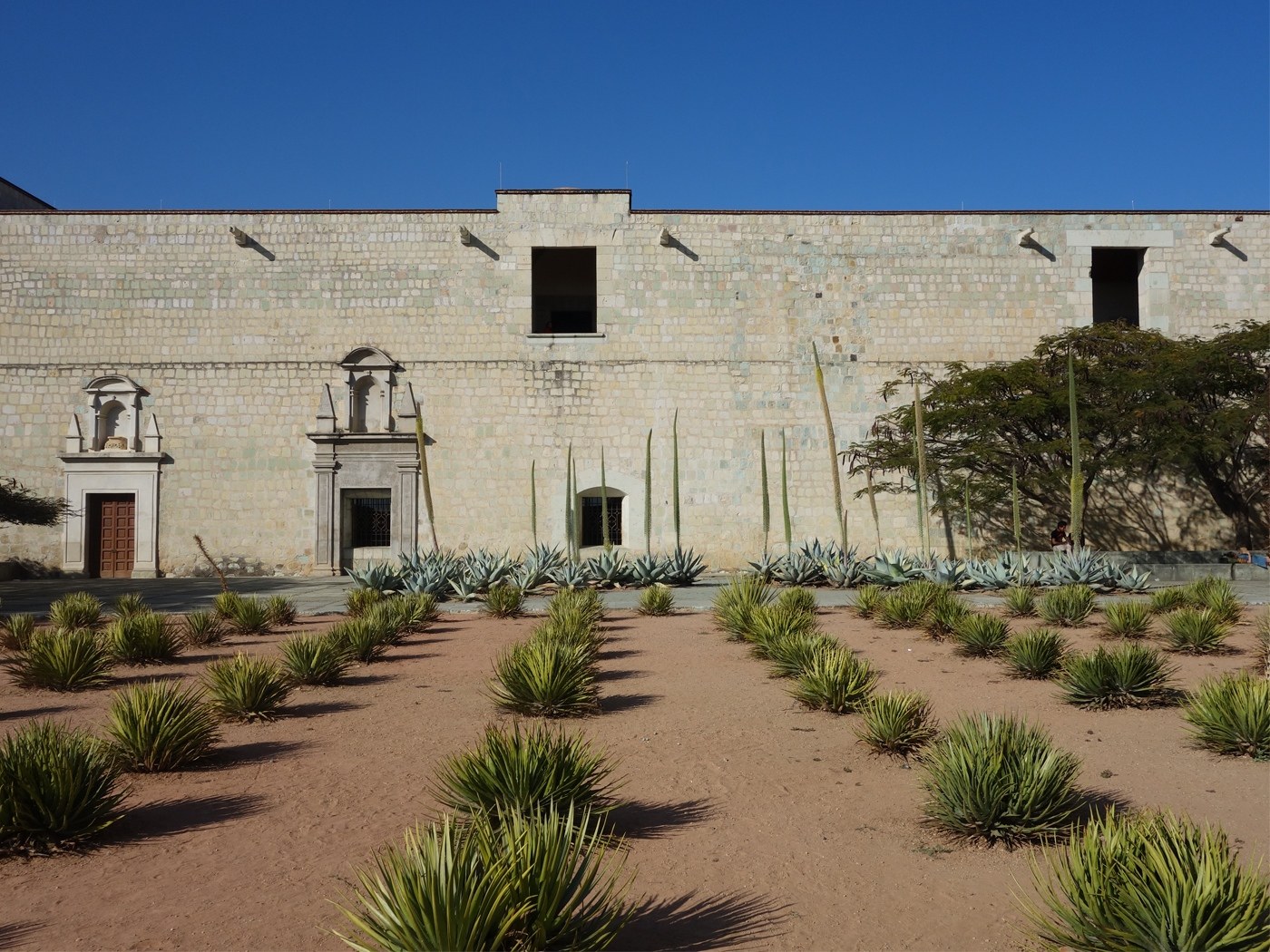i 14
Oaxaca
Churches in which every surface is covered in rich decoration are not my thing (I prefer Cistercian Abbeys), and the church of Santo Domingo in Oaxaca is enough to bring on a migraine.
But through a small door to the side with a quiet sign announcing a cultural centre (often a mixed blessing) is the antidote.
First a double storey cloister, leading to a baroque staircase, from which leading away was revealed a breathtaking dormitory corridor.
Brick vaulted ceiling and polished plaster walls lead towards a stone-framed window opening, unglazed, looking out to the mountains. At the end, to one side, is a covered loggia, and to the other leading away another vaulted corridor, as long as the first, with framed openings looking back to the church. At its end some steps to the side to a balcony open over the botanical garden of cacti, lead to another vaulted corridor – and at its end another, leading back to the stair. The corridors are lined to the sides with monks’ dormitory cells, each with its own vaulted domed roof, the quality of the architecture surpassing any luxury hotel I can think of.
Monte Alban (c.100BC) in the mountains above – a city so obtuse (water had to be carried up) as to be a display of power. A huge central public space lined with ceremonial buildings is as if carved like a Michelangelo sculpture from the mountain whose top was cut off to create it.













